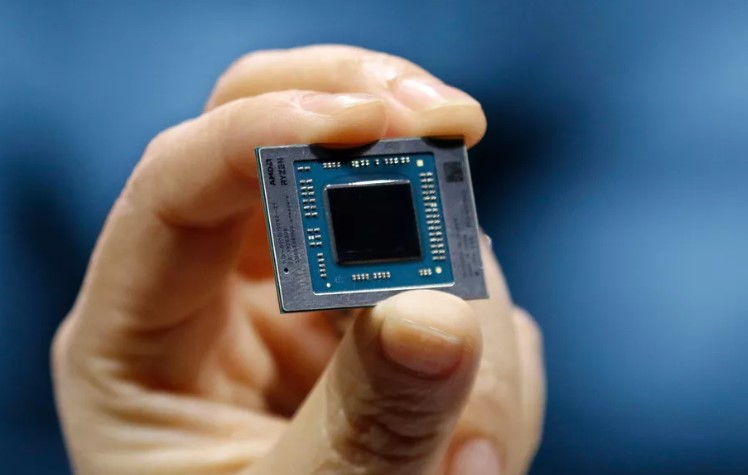
AMD’s third-generation Ryzen processors for laptops have officially arrived at CES 2020, with the announcement of the new Ryzen 4000 series of chips based on the company’s 7nm Zen 2 architecture. They’re the first AMD laptop chips to make the jump: while the company brought that Zen 2 to desktop with the Ryzen 3000 series, its 3000-series laptop chips still used an older process.
AMD is taking a page from Intel’s book with the naming of its new processors, which are launching in two different types. There’s the 15W Ryzen U-Series, designed for ultra-portable laptops; and the Ryzen H-Series, a line of 45W chips meant for more powerful gaming and content creation machines that AMD promises will deliver desktop-class performance on laptop hardware. (The designations line up perfectly with Intel’s own.) Additionally, AMD will be keeping the Ryzen 3, Ryzen 5, and Ryzen 7 demarkations within those relative U-Series and H-Series tiers, similar to Intel’s Core i3, i5, and i7 chips.
The new chips are designed to go head-to-head against Intel’s latest chips. As AMD CEO Lisa Su announced onstage, the newly introduced top of the line U-Series chip, the Ryzen 7 4800U, offers an eight-core, 16-thread design and 1.8 GHz clock speeds that can boost up to 4.2 GHz. More importantly, though, the Ryzen 7 4800U benchmarks 4 percent better in single-thread performance, 90 percent better in multithread cases, and 28 percent better for graphics compared to Intel’s closest competitor, the comparably specced Core i7-1065G7 from the company’s latest 10nm Ice Lake lineup.
Su also noted that the new Ryzen 4000 chips are twice as power-efficient compared to the second-generation Ryzen chips, largely due to the gains from jumping from the 12nm to the 7nm process.
That jump ahead — even if it’s incremental, as in the case of single-threaded performance — is key for AMD. In a recent head-to-head test of AMD’s second-gen Ryzen chips against a comparable Ice Lake processor in the Surface Laptop 3, Intel’s 10nm Ice Lake chips won handily compared to AMD’s best chips. With the new Ryzen 4000 chips, AMD hopes to not only catch up but actually take the lead against Intel when it comes to performance and battery life.
On the 45W side, the H-Series lineup is lead by the Ryzen 7 4800H, an eight-core, 16-thread processor with 2.9 GHz base speeds that can boost up to 4.2 GHz.
AMD says that the first AMD Ryzen 4000 series laptops will arrive from Acer, Asus, Dell, HP, Lenovo, and other companies starting in Q1 2020. The full list of AMD’s new Ryzen 4000 lineup is included in the chart below:
AMD RYZEN 4000
| Model | Cores/ Threads | Watts | Boost / Base Frequency (GHz) | GPU Cores | L2 / L3 Cache (MB) |
|---|---|---|---|---|---|
| AMD Ryzen 7 4800H | 8C/16T | 45W | Up to 4.2 / 2.9 GHz | 7 | 12 |
| AMD Ryzen 5 4600H | 6C/12T | 45W | Up to 4.0 / 3.0 GHz | 6 | 11 |
| AMD Ryzen 7 4800U | 8C/16T | 15W | Up to 4.2 / 1.8 GHz | 8 | 12 |
| AMD Ryzen 7 4700U | 8C/8T | 15W | Up to 4.1 / 2.0 GHz | 7 | 12 |
| AMD Ryzen 5 4600U | 6C/12T | 15W | Up to 4.0 / 2.1 GHz | 6 | 11 |
| AMD Ryzen 5 4500U | 6C/6T | 15W | Up to 4.0 / 2.3 GHz | 6 | 11 |
| AMD Ryzen 3 4300U | 4C/4T | 15W | Up to 3.7 / 2.7 GHz | 5 | 6 |
| AMD Athlon Gold 3150U | 2C/4T | 15W | Up to 3.3 / 2.4 GHz | 3 | 5 |
| AMD Athlon Silver 3050U | 2C/2T | 15W | Up to 3.2 / 2.3 GHz | 2 | 5 |





























